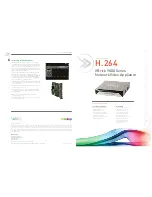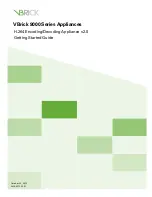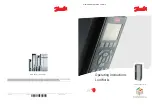
Using a Remote Unit
HE4000 Encoding System
4.2.2 Typing Remote Commands
Remote commands are not case sensitive. Commands may be entered in lower case, upper
case, or a combination of both.
4.2.3 Entering Parameter Values
Some command parameters must be enter as a numeric value, which is represented by the
pound sign <#>. If more than one pound sign is shown for a given parameter <###>, a number
must be entered for each pound sign. When a command is issued containing a numeric value,
do not type in the (#) nor the bracket <> signs. Enter only the numerical value for the parameter.
4.2.4 Error Messages
If the HE4000 is not able to execute a command, an error message will be returned, indicating
the command was not completed. HE4000 error messages, along with the action required to
resolve the error, are listed in the following table.
Error Messages
Error Message
Explanation
Action Required
ERROR:AMBIGUOUS_LOCAL_
INSTANCE
A designator, other than a slot
designator, is required in order to
set or query the command.
For example, all audio
commands require a port
designator in order to correctly
process a command.
Issue the command using the
correct syntax, format, and
parameter.
Ensure that the appropriate
designators are included in the
command string.
ERROR:AMBIGUOUS_ SLOT
A slot designator is required in
order to set or query the
command.
For example, all audio and
auxiliary data commands require
a slot designator.
Issue the command using the
correct syntax, format, and
parameter.
Ensure that the appropriate
designators are included in the
command string.
ERROR:BAD_NUMBER_FORM
AT
The parameter number format is
incorrect.
For example, a hexadecimal
value was entered when a
decimal value is required.
Issue the command using the
correct parameter format.
ERROR:BAD_RC_INSTANCE
The command mnemonic cannot
be matched to a card installed in
the product..
Use the ‘?’ command to view the
current card types.
Issue the command using the
proper syntax and format.
4-4
01-0951-404 Rev B















































